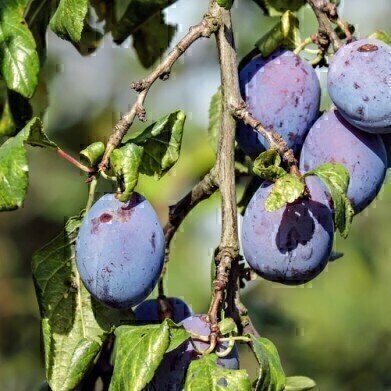LC-MS
What Makes Plums So Sweet? — Chromatography Explores
Mar 28 2018
Plums are one of commonest fruits found in our homes and supermarkets. They are also relatively easy to grow in your garden too. But how do you know when it is time to pick them? That is where chromatography can come in handy. Read on to find out if your plums are ripe.
Plums — a drupe brother to peach and apricot
There are over two thousand varieties of plums belonging to the genus Prunus which in turn belongs to the family Rosaceae, which includes apples and roses. Prunus is a genus of bushes and trees that includes fruits like apricots, peaches and nectarines — alongside plums.
The fruit produced by these Prunus plants are known as drupes or stone-fruit. They have an outer fleshy part (mesocarp) that is surrounded by skin (exocarp). At the centre of the flesh is a stone which comprises a shell (endocarp) that protects the seed (kernel) inside.
Fruit of the world
Plums are grown in many different countries and climates on small deciduous trees. They can be divided into different types including:
- Prunus domestica which is the European-Asian plum,
- Prunus salicina or Japanese plum, and
- Prunus insititia or damson, mainly found in the UK.
By far, the largest harvester of plums is China with over 55% of global production, followed by Romania, Serbia and the US. Plums have been found in many archaeological sites, including some Neolithic sites — potentially making plums one of the first domesticated fruits. Of course, dried plums give rise to that grandmother’s favourite — prunes, guaranteed to keep you regular.
Are your plums ripe?
There are many different colours, sizes and flavours of plums. But generally, people prefer to eat them when they are sweet. To choose the best time to harvest your plums — when they are at their ripest — growers have used traditional methods like firmness or skin and flesh colour. But could chromatography help this process?
Research suggests that the answer is yes (if you have an HPLC to hand), with its ability to measure the sugar content of the fruit key to the fruit’s sweetness. Plums contain three main sugars — glucose, sucrose and fructose, with the concentrations depending on the cultivar or variety. Total sugar content of plums changes during the ripening process and even changes between cultivars.
But research shows that by measuring the individual and total sugar concentrations in the fruit using high performance liquid chromatography, we know that sugar content increases during the ripening process. The use of chromatography as a tool for analysing food samples is discussed in the article, Utilisation of LC/MSMS (QTRAP) and Polarity Switching for the Quantitative Analysis of Over 300 Pesticides in Crude QuEChERS Extracts from Various Fruit and Vegetable Matrices. Research also shows that some cultivars have significantly higher total sugar content that other cultivars.
So, for sweet plums? Pick the right cultivar for your region and harvest at just the right time.
Digital Edition
Chromatography Today - Buyers' Guide 2022
October 2023
In This Edition Modern & Practical Applications - Accelerating ADC Development with Mass Spectrometry - Implementing High-Resolution Ion Mobility into Peptide Mapping Workflows Chromatogr...
View all digital editions
Events
Apr 23 2024 Kintex, South Korea
Apr 23 2024 Seoul, South Korea
Apr 28 2024 Montreal, Quebec, Canada
May 05 2024 Seville, Spain
May 15 2024 Birmingham, UK














